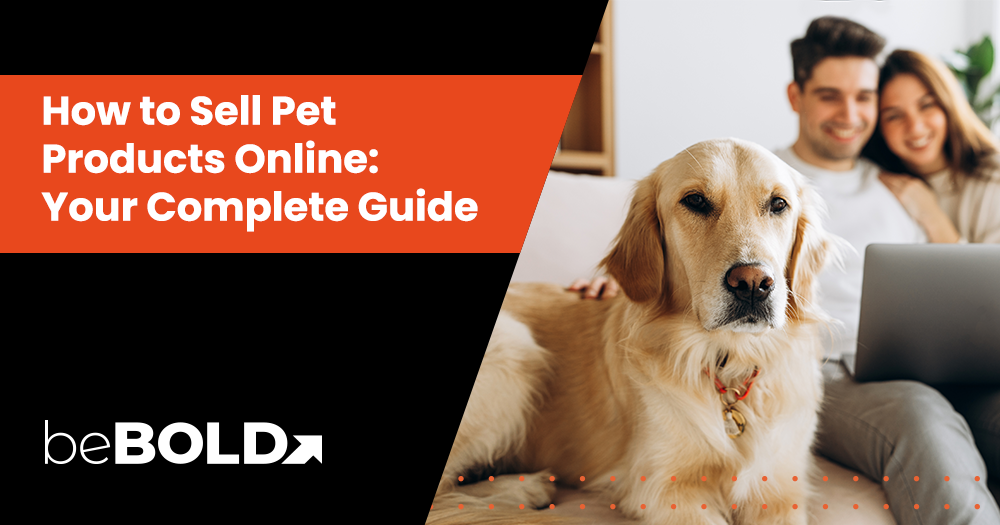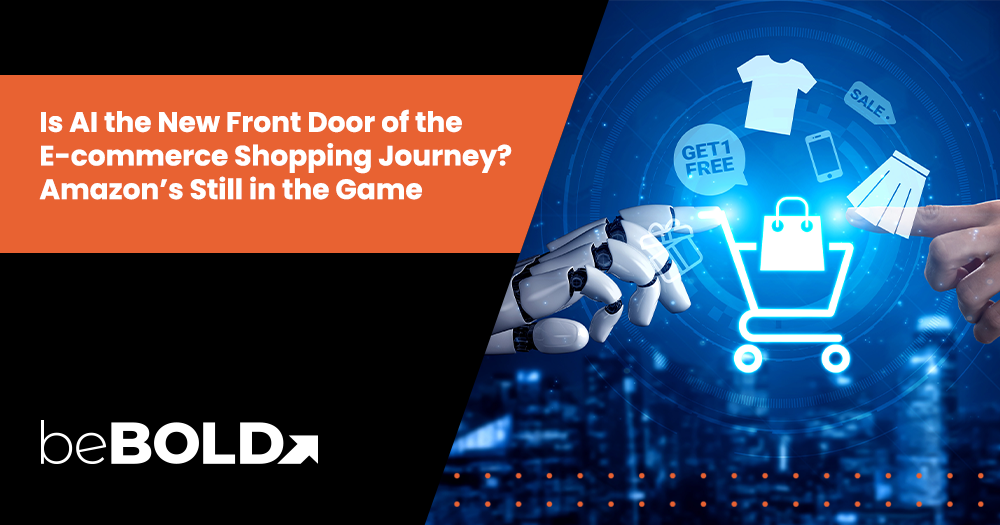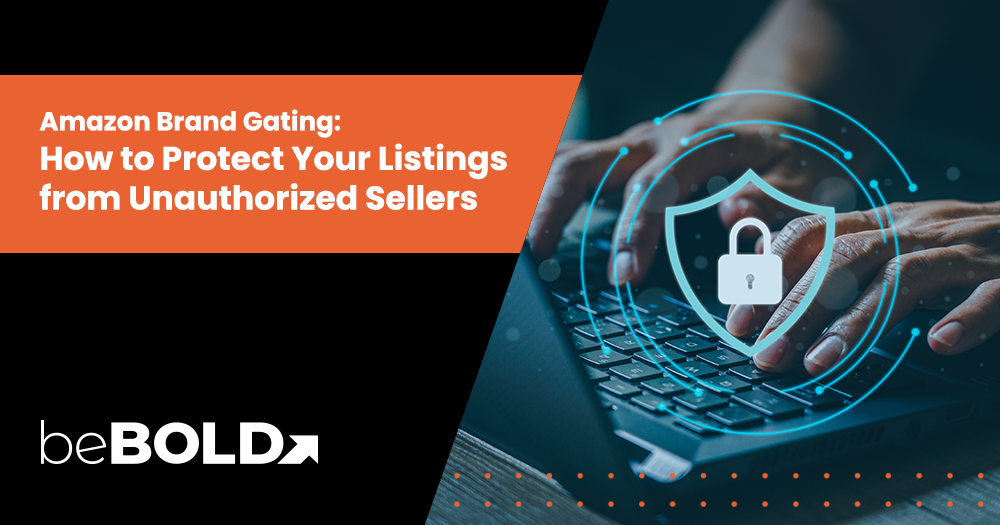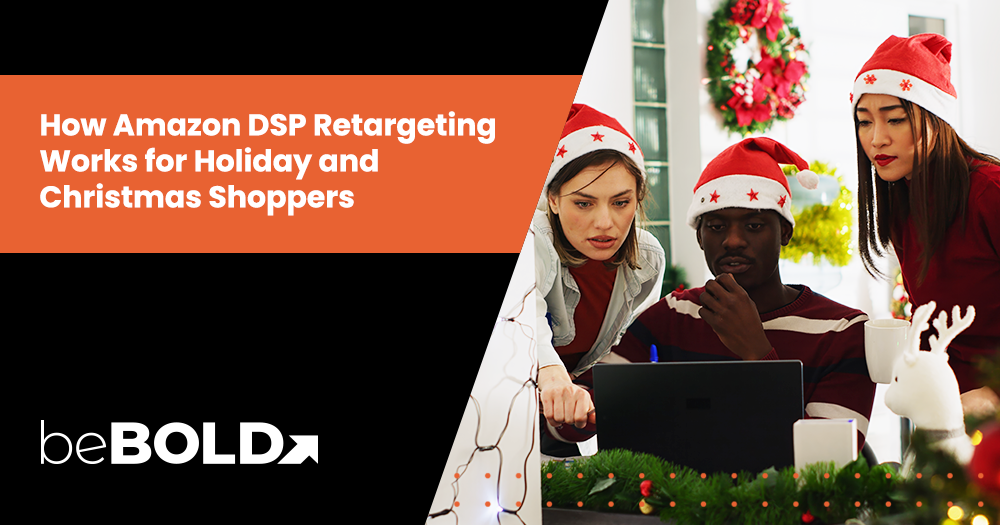Key Highlights
- The pet industry is booming 🐾, and consumers are actively seeking unique, high-quality products for their furry companions.
- Success starts with understanding current trends and choosing a niche that speaks to your audience’s specific needs 🎯.
- From organic treats to smart tech toys, there’s endless room to carve out a space and stand apart from mass-market brands 🧸.
- Setting up your online store means more than building a website — it involves legal setup, clear branding, and smart positioning 🏪.
- Finding the right sourcing method — whether wholesale, private label, or dropshipping — can define your inventory strategy and margins 💼.
- Every brand needs a voice, and building one that resonates with pet parents builds trust and drives long-term loyalty 💬.
- With your foundation in place, it’s time to attract traffic through smart SEO, content marketing, and targeted social campaigns 🚀.
- Expanding to Amazon can amplify your reach 🌐, but requires compliance, optimized listings, and strategic fulfillment choices 📦.
- From first sale to scaling up, consistent engagement, strong customer support ❤️, and ongoing marketing keep the momentum going.
Quick Start: 10 Steps to Selling Pet Products Online
Ready to turn your pet product idea into an online business? Whether you're a passionate pet lover or an entrepreneur looking to tap into a booming industry, this quick-start guide will walk you through the essentials—from niche selection to customer retention.
- 🐾 Identify a niche (organic, eco-friendly, breed-specific)
- 🔍 Research competition & demand
- 🛍️ Choose a product sourcing method (wholesale, private label, dropshipping)
- 📝 Register your business and legal docs
- 🖥️ Set up your ecommerce store
- 🎨 Build your brand (name, logo, voice)
- 🐶 Create product listings (SEO-focused)
- 🚀 Launch with a strong marketing plan
- 🛒 Expand to Amazon & online marketplaces
- 💬 Focus on retention (reviews, loyalty)
Pet Industry Trends: What’s Driving Growth?

Pet spending is on the rise, with owners seeking products that enhance their pets' lifestyle and comfort. To succeed in the pet business, it’s crucial to understand industry trends, identify niche markets, and align with customer needs.
Should You Sell Pet Products
The pet industry is booming—expected to surpass $150 billion in the U.S. alone by 2025. From premium treats to eco-friendly accessories, the demand for quality pet products keeps growing.
Why? Because today’s pet owners don’t just buy for their animals—they shop for them like family. That means they’re more loyal, more emotionally invested, and more likely to seek out brands that truly care.
But before jumping in, ask yourself:
- 🐕 Do you have a genuine passion for pets?
- 🔎 Can you spot niche trends and product gaps?
- 📦 Are you ready to handle inventory, shipping, or customer support?
If you're nodding "yes," you're already on the right track. This space rewards passion, patience, and a sharp eye for what pet lovers really want.
Market Trends and Opportunities
The pet industry is booming as more people treat pets like family, fueling demand for premium, health-conscious products and expert services like dog training. This shift creates major opportunities for entrepreneurs to build high-value, human-grade pet brands.
Key growth areas in the pet industry:
- Health-focused food and treats: Rising interest in organic, grain-free, raw, and nutrient-rich diets for pets.
- Pet accessories and lifestyle products: Increased demand for stylish collars, eco-friendly toys, custom fashion items, designer beds, and smart tech gadgets.
- Senior pet care: Expanding market for products tailored to aging pets, including supplements, mobility aids, dental solutions, and prescription diets.
- Pet wellness services: Growth in grooming, spa treatments, massage therapy, and alternative medicine options like acupuncture and CBD products.
Market and Consumer Behavior Insights
Here are some key statistics that you need to know about.
- Market Growth:
The global pet care market is projected to reach 358.62 billion by 2027, with a CAGR of over 6%. (source) - Humanization of Pets:
About 60% of pet owners include their pets in long-term life planning, driving demand for products that match human standards. (source) - Premium & Natural Products:
Sales of natural and organic pet food have grown significantly, with premium pet food now making up over 41% of the market. (source) - Health & Wellness Focus:
Products targeting pet wellness—like supplements, dental care, and calming treats—are seeing double-digit growth annually
Find Your Niche: Stand Out in the Pet Market
Before launching an online pet store, it's crucial to define your niche. This helps you stand out, attract the right audience, and build a brand with a clear focus.
Specializing in Categories Like Organic Pet Food, Eco-Friendly Toys, or Breed-Specific Accessories
- Choose a Specific Focus: Pick a niche like organic food or eco-friendly toys that aligns with your brand.
- Know Your Audience: Understand your market’s needs to offer solutions they can’t find elsewhere.
- Offer Unique Products: Stand out with specialized items like premium ingredients or breed-specific accessories.
- Build Expertise: Position your brand as the go-to source in your niche.
Top-Selling Pet Product Categories on Amazon
Amazon is ideal for selling pet products, with top categories including dog food, health supplements, toys, beds, and grooming items. Cat accessories and bird supplies also see strong sales.
1. Best Pet Product for Dogs

As the saying goes, dogs are a man's best friend. Dog-related products constitute a significant segment of the pet product market. However, discerning dog owners usually prefer products that are safe, durable, and cater to their pet's well-being. Bestselling products include:
|
Search Frequency |
Search Term |
#1 Clicked Brand |
#2 Clicked Brand |
#3 Clicked Brand |
|---|---|---|---|---|
|
135.0K |
Dog Food |
CESAR |
Hill |
Whole Paws |
|
33.1K |
Dog Treats |
Purina Busy |
Greenies |
Minties |
|
33.1K |
Dog Toys |
Benebone |
KIPRITII |
WinTour |
|
2.4K |
Dog Collars and Leashes |
SportDOG |
ladoogo |
FOVRLZSE |
|
4.4K |
Dog Grooming Supplies |
Pet MD |
KETCHY |
HEAPETS |
2. Best Pet Products for Cats

Just as with dogs, cat owners seek out products that promote the health, comfort, and entertainment of their feline friends.
|
Search Frequency |
Search Term |
#1 Clicked Brand |
#2 Clicked Brand |
#3 Clicked Brand |
|---|---|---|---|---|
|
90.5K |
Cat Food |
Whiskas |
Purepet |
Meat Up |
|
18.1K |
Cat Treats |
Sheba Melty |
Temptations |
PUREPET |
|
60.5K |
Cat Litter |
Hipkoo |
Luxpet |
Amazon Basics |
|
113K |
Cat Toys |
BarkButler |
BELOXY |
BarkButler |
|
2K |
Cat Grooming Supplies |
Aachoko |
Qpets |
DOGTOWN |
3. Best Pet Products for Birds

Bird keepers are always on the lookout for products that enhance the life quality of their feathery companions.
|
Search Frequency |
Search Term |
#1 Clicked Brand |
#2 Clicked Brand |
#3 Clicked Brand |
|---|---|---|---|---|
|
16.8K |
Bird Food |
Purchansive |
BOLTZ |
The Birds Company |
|
35.4K |
Bird Feeders |
Garden’s Need |
SpikeZone |
Nature Forever |
|
13.7K |
Bird Toys |
KUTKUT |
The Pets Company |
BOLTZ |
|
20 |
Bird Health Supplies |
The Birds Company |
Unitailz |
My Beau Avian |
|
Search Frequency |
Search Term |
#1 Clicked Brand |
#2 Clicked Brand |
#3 Clicked Brand |
|---|---|---|---|---|
|
16.8K |
Bird Food |
Purchansive |
BOLTZ |
The Birds Company |
|
35.4K |
Bird Feeders |
Garden’s Need |
SpikeZone |
Nature Forever |
|
1.6K |
Bird Perches |
The Pets Company |
KSK |
WildBird |
Setting Up Your Online Pet Store

After identifying your niche, create a business plan outlining your goals, branding, target audience, and marketing strategy. Choose a secure, user-friendly e-commerce platform with customizable templates and integrate payment gateways for smooth transactions.
1. Legal Setup: Licenses, EINs, and Regulations
Starting a successful pet business online involves more than just a love for animals—it requires handling key legal requirements and administrative steps to ensure you're operating responsibly and professionally, especially for pet lovers.
Essential steps for setting up your pet business:
- Register Your Business: Choose your business structure (LLC, sole proprietorship, etc.) and register your name.
- Obtain an EIN: Get an Employer Identification Number (EIN) for tax purposes.
- Business Licenses and Permits: Secure necessary licenses based on location and product type.
- Comply with Product Regulations: Ensure pet food and product compliance with FDA and state standards.
- Set Up a Business Bank Account: Keep finances separate for easier bookkeeping.
2. Building Your Brand
Building a strong pet brand means more than designing a logo—it’s about creating a consistent, memorable experience that resonates with your audience and sets you apart.
Creating a Compelling Brand Identity and Value Proposition
- Define Your Brand’s Purpose: Focus on what sets your pet store apart—whether it’s high-quality products, sustainability, or pet wellness.
- Craft a Memorable Name and Logo: Ensure your brand name and logo are catchy, easily recognizable, and aligned with your values.
- Develop a Strong Voice: Use consistent messaging across platforms to connect with pet owners, highlighting your commitment to quality and care.
- Value Proposition: Clearly communicate the unique benefits your products and services offer, emphasizing what makes your brand the best choice for pet parents.
3. Choosing the Right E-commerce Platform
Choosing the right e-commerce platform is a key decision that directly impacts the performance, scalability, and user experience of your online pet store.
Comparing Shopify, WooCommerce, and BigCommerce
- Shopify:
- Best for: Beginners or those who want a simple, all-in-one solution.
-
- Key Features: Easy setup, secure hosting, 24/7 support, integrated payment system.
-
- Cons: Monthly fees, transaction fees if not using Shopify Payments.
- Cons: Monthly fees, transaction fees if not using Shopify Payments.
- WooCommerce:
- Best for: Those familiar with WordPress or wanting more control over customization.
- Key Features: Open-source, highly customizable, large plugin marketplace.
- Cons: Requires hosting, more hands-on management, potential for higher maintenance costs.
- Best for: Those familiar with WordPress or wanting more control over customization.
- BigCommerce:
- Best for: Growing businesses that need scalability and advanced features.
- Key Features: Built-in SEO tools, multi-channel selling, no transaction fees.
- Cons: Steeper learning curve, higher starting costs compared to Shopify.
- Best for: Growing businesses that need scalability and advanced features.
How to Source Pet Products (Wholesale, Private Label, Dropship)

Once you’ve built the foundation for your online pet store, the next big decision is: How will you stock your products?
There are three main methods to consider—wholesale, private label, and dropshipping. Each has its pros, cons, and ideal use cases depending on your budget, brand goals, and operational setup.
1. Wholesale Suppliers and Distributors
Purchasing from wholesale suppliers and distributors typically involves buying goods at a lower price and selling them at a markup. This is an excellent way to get a variety of products delivered directly to your pet retail store.
|
✅Pros |
❌Cons |
|
Quick access to a wide variety of existing products |
Less brand differentiation |
|
Faster launch time—no need to develop new items |
Requires upfront inventory investment |
|
Potential for bulk pricing discounts |
You handle storage and shipping logistics |
🔎 Best Practices:
- Vet suppliers: Look for strong reviews and verified industry credentials
- Test quality: Always order samples before committing
- Negotiate terms: Discuss MOQs, payment terms, and delivery schedules
- Build trust: Good communication leads to better long-term deals
2. Private Labeling and Manufacturing
Private labeling or manufacturing offers a unique opportunity to build a distinct brand and create products tailored to your audience’s needs.
|
✅Pros |
❌Cons |
|
Full control over branding and packaging |
Higher startup costs and longer lead times |
|
Higher profit margins and brand loyalty potential |
Greater risk if products don’t sell |
|
Great for niche products (eco-friendly, breed-specific, etc.) |
Requires strong focus on quality control and compliance |
🔧 Steps to Get Started:
- Pick a niche: Choose a pet category that aligns with your brand values
- Find a manufacturer: Look for a reliable partner experienced in pet products
- Design your brand: Create eye-catching, on-brand packaging
- Enforce quality standards: Safety and performance are non-negotiable
- Build loyalty: Offer unique, exclusive products not found elsewhere
3. Dropshipping Options
Dropshipping is a cost-effective way to start an online pet store, especially if you have limited startup capital or storage space.
Dropshipping isn’t the only low-risk approach. Here’s how to sell on Amazon without inventory to keep overhead minimal.
|
✅Pros |
❌Cons |
|
No inventory or storage required |
Lower profit margins |
|
Low startup costs—pay only when you make a sale |
Less control over shipping speed and product quality |
|
Wide product variety with minimal overhead |
More reliance on third-party supplier reliability |
🔧 Tips for Success:
- Choose reliable suppliers: Check delivery speed, customer service, and reviews
- Start small: Focus on a core product set before expanding
- Invest in marketing: Since logistics are outsourced, focus your energy on driving traffic and conversions
- Dropshipping isn’t the only low-risk model. If you're interested in selling on Amazon without holding inventory, consider Fulfilled by Amazon (FBA) or print-on-demand models tailored for pet products.
Marketing and Selling Your Products

After setting up your store, focus on attracting customers through digital marketing, increasing engagement, and using online marketplaces to expand your reach and boost sales.
1. Digital Marketing Strategies
An effective digital marketing strategy boosts your online presence, attracts customers, and converts them into loyal supporters.
Utilizing SEO, Content Marketing, and Social Media to Drive Traffic
- SEO:
Optimize your website with targeted keywords, high-quality content, and product descriptions to improve search engine rankings. - Content Marketing:
Create engaging blog posts, guides, and videos related to pet care, wellness, and product reviews to attract and educate customers. - Social Media:
Leverage platforms like Instagram, Facebook, and TikTok to build brand awareness, share user-generated content, and run targeted ads. - Email Marketing:
Build an email list to send personalized offers, product updates, and valuable pet tips to keep customers engaged. - Influencer Partnerships:
Collaborate with pet influencers to expand reach and credibility within the pet community.
2. Customer Engagement and Retention
Engaging your customers and building long-term relationships is key to brand loyalty and repeat business.
Implementing Loyalty Programs and Personalized Communication
- Loyalty Programs:
Offer rewards like discounts or exclusive products for repeat purchases to encourage long-term loyalty. - Personalized Communication:
Use customer data to send personalized emails, product recommendations, and tailored offers that resonate with individual preferences. - Engage on Social Media:
Interact with customers through comments, direct messages, and user-generated content to build a strong community. - Exclusive Content:
Provide special content, such as pet care tips or early access to new products, to keep customers engaged and excited.
3. Leveraging Online Marketplaces
Online marketplaces like Etsy, eBay, and Chewy are powerful tools for expanding your reach and gaining credibility..
Selling Pet Products on Amazon
Still on the fence about selling on Amazon? If you’re wondering whether it’s the right channel for your brand, our guide—“Is Selling on Amazon Worth It?”—breaks down the pros, cons, and key strategies you need to know.
Amazon offers massive potential, especially for brands in competitive niches like pet products. But success doesn’t happen by accident. It takes a thoughtful approach to everything from account setup and product listings to category restrictions, safety compliance, fulfillment choices, and marketing strategy.
1. Setting Up an Amazon Seller Account

Setting up your Amazon Seller Account is the first step to start selling on the platform.
Steps to set up your Amazon Seller Account:
- Register for an Amazon Seller Account and provide the necessary details, including phone verification and billing information.
- Choose between an Individual or Professional Seller Account:
- Individual Seller Account: No monthly fee, but per-item fees apply and access to fewer categories.
- Professional Seller Account: Monthly subscription required, no per-item fees, and access to more categories.
2. Listing Your Products

After setting up your Amazon Seller Account, the next step is adding Amazon product listings. Optimize product titles, descriptions, and images for visibility. Maintain an SEO checklist to ensure that you tick off all the requirements to have your products listed on Amazon.
3. Navigating Category Requirements
Amazon has specific requirements for different product categories, and some may require approval before listing.
Steps to comply with Amazon’s pet category requirements:
- Check category-specific requirements in Amazon Seller Central before listing your products.
- Provide necessary documentation like invoices, product compliance certificates, or safety information if required.
- Ensure product listings align with Amazon’s policies for a smooth selling experience.
4. Compliance and Safety Regulations
Adhering to Amazon's product safety and compliance requirements is crucial to avoid penalties or suspension of your selling privileges.
New to Amazon? Here’s our Amazon Seller Dashboard beginner’s guide.
Navigating FDA/USDA Rules, Labeling Laws, and Pet Toy Standards
- FDA/USDA Regulations: Ensure pet food meets safety, ingredient, and labeling standards set by the FDA and USDA.
- Labeling Laws: Accurately list nutritional info, ingredients, and health claims to avoid legal issues.
- Pet Toy Safety: Follow CPSC guidelines to ensure toys are non-toxic and safe for pets.
- Build Trust: Emphasize safety and compliance to gain customer confidence and stand out in a competitive market.
5. Fulfillment Options
When deciding between Fulfillment by Amazon (FBA) and Fulfillment by Merchant (FBM), it's important to consider how your product type—especially food vs. accessories—affects fulfillment requirements.
FBA for Food Products:
- Expiry handling: Amazon has strict expiration date management for food items. FBA requires you to provide accurate expiry dates, and products that are close to expiration may be removed from Amazon’s inventory.
- Packaging requirements: Amazon has specific packaging standards for food products, ensuring they are sealed, safe, and compliant with health regulations.
- Storage fees: Food items often incur higher storage fees due to the need for careful handling and expiration considerations.
FBA for Accessories:
- No expiry concerns: Accessories like pet toys or beds don't have expiration dates, making them simpler to manage in FBA.
- Packaging standards: Accessories must still meet Amazon's general packaging guidelines, but there are fewer restrictions compared to food products.
- Storage fees: Typically lower than for food, as accessories are non-perishable and easier to store.
FBM for Both Categories:
- More control: FBM gives you control over inventory, packing, and shipping but requires more effort to ensure packaging meets Amazon's standards for both food and accessories.
- Food handling: If selling food via FBM, you must ensure that you handle expiry dates and storage properly on your own.
- Shipping flexibility: FBM allows you to choose your own shipping methods, which can be useful if you want to cater to niche customer needs, such as faster delivery for perishable items.
6. Marketing Within Amazon
Promoting your products within Amazon enhances visibility and drives conversions.
Marketing within Amazon:
- Amazon Advertising: Use Sponsored Products, Brands, and Display ads to target relevant customers and boost product visibility.
- Promotions: Leverage Lightning Deals and Coupons to attract price-sensitive shoppers and increase conversions.
Review Strategies for Pet Brands:
- Amazon Reviews: Encourage positive reviews by offering excellent customer service and follow-up emails post-purchase.
- User-Generated Content (UGC): Share customer reviews and pet photos on TikTok, Instagram Reels, and social media to build trust and authenticity.
- Google Reviews: Request reviews on Google to enhance your online reputation and improve search rankings.
If you're weighing fulfillment vs. promotion-first models, Affiliate Marketing vs Amazon FBA gives a clear comparison for beginners.
Amazon Pet Product Launch in 7 Steps

Launching your Amazon pet product involves careful planning and execution. The following steps provide a guide to make your product launch successful:
1. Market Research
Analyze trends, identify top-selling products, and understand customer preferences to spot gaps in the market.
2. Product Sourcing
Decide whether to create, source, or dropship products, ensuring quality meets customer expectations.
3. Create Product Listings
Upload products with a compelling title, detailed description, high-quality images, and appropriate pricing.
4. Navigate Category Requirements
Check if your product requires Amazon’s approval and submit necessary documents if applicable.
5. Register for FBA
Set up an FBA account and send products to Amazon’s warehouse if using their fulfillment services.
6. Marketing and Advertising
Utilize Amazon ads, create A+ content, and optimize listings with relevant keywords for better visibility.
7. Monitor Sales, Reviews, and Inventory
Track sales, manage inventory, respond to customer feedback, and optimize marketing campaigns for sustained growth.
If you want help with starting and marketing your online pet business, connect with beBOLD Digital now!
Amplify Your Brand’s Digital Presence with beBOLD Digital
At beBOLD Digital, we specialize in helping businesses stand out in the crowded digital marketplace. With a focus on innovative SEO strategies, tailored content, and high-impact marketing solutions, we help you connect with your target audience and drive real results.
Why Choose beBOLD Digital?
- Customized SEO Strategy: Boost your search rankings and drive organic traffic with strategies tailored to your unique needs.
- Content That Resonates: Create compelling content that speaks directly to your audience and builds brand loyalty.
- Data-Driven Decisions: Leverage analytics to measure performance and continuously optimize your campaigns.
- Comprehensive Digital Solutions: From social media management to paid ads, we provide end-to-end services to grow your brand.
Ready to take your digital marketing to the next level? Schedule a free consultation with our experts today and see how beBOLD Digital can transform your online presence.
Conclusion
Successfully selling pet products online involves several key steps: registering your business, choosing the right e-commerce platform, partnering with reliable suppliers, developing a unique brand, and ensuring compliance with safety regulations. Don’t forget to leverage effective marketing strategies and build strong customer relationships to drive growth.
Now is the time to take action—use the resources available, from niche research to platform tools, to build a brand that resonates with pet parents. Your path to success starts with the first step!
Frequently Asked Questions
Do I need a license to sell pet products online?
Yes, depending on the type of pet products you are selling and where you are based, you may need a license. For example, selling homemade pet food or treats often requires a health department permit. Always check with your local government.
Can I sell homemade pet treats online?
Yes, homemade pet treats can be sold online, provided they comply with all relevant federal, state, and local regulations regarding food production, safety, and labeling.
What are the best platforms for selling pet products?
Populated marketplaces like Shopify, Amazon, Etsy, and eBay are great for vast exposure. However, having your own online store provides control over branding, customer interaction, and profit margins. Leveraging social media platforms can also help drive sales.
How do I handle returns and customer service?
Ensure your online pet store has a clear return policy and multiple methods of customer support (like email, phone, live chat). Promptly addressing customer queries and handling returns professionally helps build customer trust and loyalty.
Do I need special approval to sell pet supplements or food?
Yes, to sell pet supplements or food, you need approval from the health department and must comply with FDA regulations. It's crucial to ensure that all products and product claims adhere to federal, state, and local laws.
Can I use a private label for pet products on Amazon?
Yes, private labeling allows you to sell products under your brand on Amazon. However, make sure these products meet Amazon's product safety requirements and comply with all relevant regulations.
What’s the best way to get reviews for new pet listings?
Offer superior customer service, request reviews via email follow-ups, and consider product giveaways in exchange for honest reviews to gather initial reviews for new product listings.
What are the risks of selling pet products online?
Some risks include return and refund issues, customer complaints, meeting safety and quality standards, competition from large pet brands, managing stock, and handling shipment and delivery of a diverse range of products.
How do I deal with seasonal demand in pet supplies?
Monitor sales data to anticipate seasonal trends, maintain sufficient inventory for anticipated demand peaks, and leverage these periods with seasonal promotions or product bundles to boost sales. Effective supply chain management aligns your business to seasonal variations in demand.
Have questions or need help getting started? Contact BeBold today—we’re here to help you grow smarter and sell better.









Comments